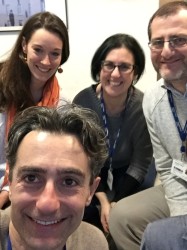BibTex format
@article{Hutson:2019:10.1126/scitranslmed.aaw2064,
author = {Hutson, TH and Kathe, C and Palmisano, I and Bartholdi, K and Hervera, A and De, Virgiliis F and Mclachlan, E and Zhou, L and Kong, G and Barraud, Q and Danzi, MC and Medrano-Fernandez, A and Lopez-Atalaya, JP and Boutillier, AL and Sinha, SH and Singh, AK and Chaturbedy, P and Moon, LDF and Kundu, TK and Bixby, JL and Lemmon, VP and Barco, A and Courtine, G and Di, Giovanni S},
doi = {10.1126/scitranslmed.aaw2064},
journal = {Science Translational Medicine},
title = {Cbp-dependent histone acetylation mediates axon regeneration induced by environmental enrichment in rodent spinal cord injury models},
url = {http://dx.doi.org/10.1126/scitranslmed.aaw2064},
volume = {11},
year = {2019}
}

